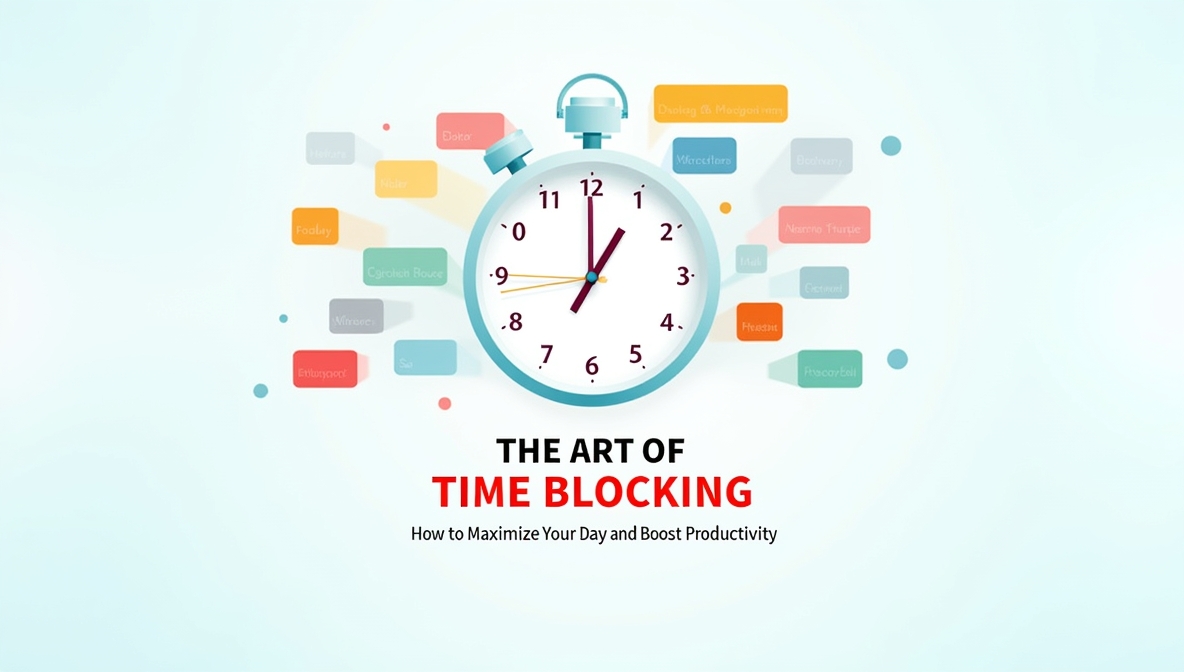In the quest for productivity, we often fall into the trap of juggling too many tasks at once, hoping to get everything done. However, multitasking can be inefficient and mentally draining. Instead, there’s a more effective strategy that successful people swear by—time blocking. This method allows you to schedule specific blocks of time for each task or activity, ensuring you stay focused and productive throughout the day. Let’s explore how time blocking works and how you can implement it to transform your daily routine.
What is Time Blocking?
Time blocking is a method where you divide your day into chunks of time, each dedicated to a specific task or group of tasks. Rather than reacting to a never-ending to-do list, you proactively assign a specific time frame to work on each item. This allows for better focus, reduces distractions, and ensures that every task receives the attention it deserves.
For example, instead of working through a vague to-do list all day, you may block off 9:00 AM to 11:00 AM for writing, 11:00 AM to 12:00 PM for emails, and 1:00 PM to 3:00 PM for meetings. Each block is dedicated to a single task or activity, and once the block is over, you move on to the next task, giving you clear boundaries and structure for the day.
Why Time Blocking is So Effective
1. It Minimizes Distractions
One of the main challenges of modern work is constant distractions. Whether it’s notifications from your phone or the temptation to check emails, distractions can derail your productivity. Time blocking combats this by carving out specific periods when you’re focused on only one thing. You’ll be less likely to switch between tasks or succumb to distractions during these blocks.
2. It Helps You Prioritize
With time blocking, you can decide in advance which tasks are the most important. If you’ve been struggling with prioritizing your day, this method can help. You can allocate larger blocks of time to your most important or demanding tasks and smaller blocks for quick tasks or administrative duties.
3. It Prevents Overworking
Time blocking can help you set boundaries, ensuring that you don’t overwork yourself. By assigning time limits to tasks, you prevent yourself from spending hours on one project and neglecting other important duties. It’s easy to get caught up in one task and lose track of time, but time blocking ensures you stay on track and make room for breaks.
4. It Improves Focus
Knowing exactly when you’ll be working on each task helps you mentally prepare to focus during that time. Your mind knows that you don’t have to rush through multiple tasks at once. Instead, you can focus all your energy on one thing at a time, which can lead to better quality work.
How to Start Time Blocking
1. Identify Your Tasks
Start by listing all the tasks you need to accomplish in a day. This can include both work-related and personal activities. Break larger tasks into smaller, manageable actions to make time blocking easier.
2. Estimate the Time Needed
For each task, estimate how much time you’ll need. Be realistic—underestimating can lead to frustration, while overestimating might make the schedule feel too rigid. Don’t forget to allow for breaks!
3. Assign Time Blocks
Now that you have your tasks and time estimates, start assigning them to specific time blocks throughout your day. Be sure to schedule time for important but often overlooked tasks like meals and rest.
4. Stick to the Plan
Time blocking works best when you stick to your schedule. If something unexpected comes up, adjust your blocks accordingly, but try not to deviate from your plan too much. The more consistent you are with time blocking, the more natural it will become.
5. Review and Adjust
At the end of each day or week, take a few minutes to reflect on how your time blocks went. Did you complete your tasks within the allocated time? Did some tasks take longer than expected? Adjust your schedule accordingly for better results next time.
Common Time Blocking Mistakes to Avoid
1. Over-scheduling Your Day
Time blocking works best when you have realistic time estimates for each task. Over-scheduling can lead to burnout and frustration. Make sure to leave some breathing room between blocks for quick breaks or to handle unexpected issues.
2. Forgetting to Include Breaks
Don’t forget to schedule breaks during your day. Working non-stop can lead to fatigue and decrease productivity. Include 5-10 minute breaks between time blocks to recharge.
3. Being Too Rigid
While it’s important to stick to a schedule, flexibility is key. Sometimes, a task might take longer than expected, or you might encounter interruptions. If you find yourself constantly adjusting your blocks, you might be over-planning. Be adaptable.
SEO Keywords:
Time blocking for productivity
How to increase productivity with time blocking
Time management techniques
Benefits of time blocking
Time blocking for work and life balance
Final Thoughts
Time blocking is a powerful method to maximize productivity and reduce stress. It helps you stay focused, prioritize tasks, and avoid the overwhelm of multitasking. By planning your day in advance, you can create a structured yet flexible routine that enables you to achieve more in less time. Start small, and experiment with different blocking techniques to see what works best for you. Remember, consistency is key!

